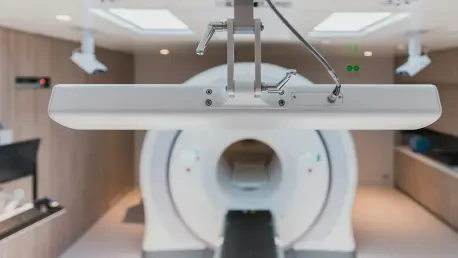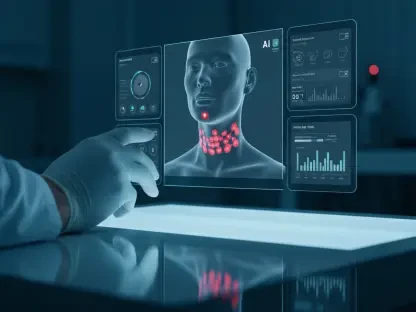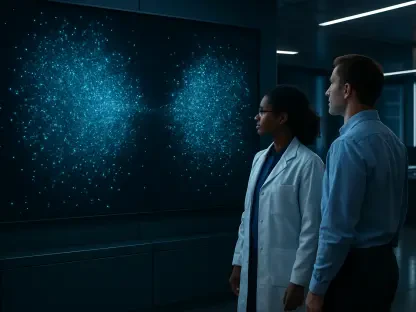With MRI demands escalating at an unprecedented pace, healthcare facilities face the pressing challenge of increasing their diagnostic capacity without the continuous acquisition of additional scanners. This scenario necessitates the integration of optimized MRI suites, focused on enhancing efficiency and patient accessibility while ensuring quality service delivery. This article explores the incorporation of architectural and procedural transformations within MRI facilities, aiming to meet these overwhelming demands. By analyzing case studies and strategic initiatives undertaken by renowned medical institutions, the study underscores the significance of innovative designs and comprehensive workflow strategies that redefine the operational landscape of imaging suites, thus improving patient care and throughput.
Escalating MRI Demands
As the healthcare industry grapples with increasing imaging volumes, facilities find themselves under relentless pressure to enhance their throughput capabilities. The rising demand for MRI scans presents a substantial challenge, with traditional approaches quickly becoming obsolete. Addressing these burgeoning needs requires a paradigm shift encompassing both structural innovation and procedural enhancements. Many institutions strive to augment the number of scans performed daily without compromising on service quality or patient accessibility. The central focus of the article lies in how these innovative transformations can serve as viable solutions for the healthcare sector, enabling smoother operations and improved patient experience.
Architectural and Procedural Transformations
In response to the rising demand, healthcare facilities are implementing architectural and procedural transformations designed to streamline diagnostic operations. A notable example can be seen with Mass General Brigham, where reimagined architectural designs and workflow strategies have significantly bolstered operational efficiency. The facility’s strategic incorporation of dockable tables and thoughtfully placed preparation bays exemplifies these advancements, facilitating swift patient transitions and increasing scanner utilization. Such innovative features ensure that while one patient is undergoing preparation, another is being scanned, allowing for seamless, uninterrupted operations. This arrangement not only reduces idle time but also significantly enhances overall throughput, demonstrating how structural optimizations can directly impact service efficiency.
These transformations translate into measurable improvements in exam duration and patient turnover, optimizing the use of available resources. By reducing preparation time and streamlining patient flow, facilities can accommodate more scans within a given timeframe, maximizing their diagnostic potential without the need for additional capital investments. The endeavor highlights that even minor adjustments in layout and workflow can result in substantial improvements in performance metrics, emphasizing the importance of diligent architectural planning and strategic operational adjustments in modern healthcare settings.
Impact on Exam and Turnaround Times
The implementation of optimized MRI suite configurations has resulted in a noticeable reduction in both exam and turnaround times. By adopting advanced practices, facilities have succeeded in increasing patient throughput, thereby elevating overall service delivery standards. For example, optimized setups at facilities like Mass General Brigham have demonstrated a significant decrease in the time required for brain and spine diagnostics, among others. This consistent reduction in exam times is a testament to the efficacy of new methodologies, underlining their capability to enhance efficiency across various diagnostic categories. Integrating these advanced configurations supports the goal of meeting growing patient demands without incurring the costs associated with additional scanner installations.
The reduction in turnaround times signifies more efficient use of resources, ultimately improving patient satisfaction through shorter wait periods and punctual commencement of appointments. These efficiencies are crucial in high-demand environments, where timely execution is paramount to maintaining service excellence. Optimized operations not only ensure that patients receive prompt care but also increase the facility’s capacity to manage increased patient volumes effectively, reinforcing the importance of strategically enhancing operations within MRI suites.
Technological Innovation
The role of technological advancements in optimizing MRI suite operations cannot be overstated. Deep learning models, for instance, are leveraged to enhance image quality and reduce scan durations significantly. These technological innovations enable facilities to perform more examinations per scanner, thus maximizing equipment use and improving patient appointment punctuality. The incorporation of cutting-edge technology into MRI operations highlights the potential to streamline procedures while maintaining diagnostic accuracy. Not only does this bolster patient satisfaction due to reduced waiting times, but it also raises the standard of care by producing high-quality images swiftly.
Furthermore, the integration of these technologies results in a more efficient allocation of resources and better compliance with scheduled appointment times, diminishing wait periods and enhancing patient experiences. This dual benefit of improved efficiency and satisfaction underscores the profound impact of technological inclusion in medical imaging, offering facilities a competitive edge in managing high patient volumes and meeting industry standards. Emphasizing technological enhancement as a core strategy reveals its indispensable role in the future of healthcare delivery, advocating for continuous innovation in service approaches.
Data-Driven Strategic Planning
The strategic vision of using data-driven planning to improve MRI suite operations is exemplified by initiatives such as those led by Dr. Scott Reeder at the University of Wisconsin. This approach leverages retrospective data analysis concerning imaging volumes, access, and utilization to anticipate future surges in demand, allowing facilities to proactively optimize their operations. Through data mining and analysis, insights into volume fluctuations and resource efficacy are gained, facilitating informed decision-making regarding resource allocation and scheduling enhancements. This strategic foresight ensures that facilities remain agile and capable of adjusting operations ahead of time to meet increasing demands effectively.
Incorporating predictive analytics into operational strategies empowers facilities to optimize scheduling and resource distribution, thereby improving appointment availability and patient access. By preparing for anticipated challenges in imaging demands, this data-driven strategy helps maintain service quality and operational efficiency. Facilities adopting such an approach can mitigate potential workload surges, ensuring consistent, high-quality diagnostic services. This foresight is pivotal in addressing logistical challenges, demonstrating how embracing analytics can fundamentally transform MRI suite operations to meet evolving healthcare needs.
Focused Protocols for Efficiency
To further enhance efficiency, many healthcare facilities are implementing focused protocols tailored specifically for emergency and outpatient settings. These protocols aim to deliver comprehensive diagnostics while reducing scan durations, effectively streamlining the imaging process without compromising diagnostic quality. This tailored approach is instrumental in reinforcing patient accessibility and facilitating swifter diagnoses, addressing the critical need for efficiency in fast-paced medical environments. By customizing protocols to specific care settings, facilities can execute scans more rapidly and effectively, allowing for greater patient throughput.
Implementing focused protocols underscores the commitment to maintaining superior patient care standards amidst rising demand pressures. The strategic emphasis on targeted procedures aligns with broader operational goals, supporting the efficient management of diagnostic workflows. By reducing scan times while ensuring accuracy, facilities can enhance patient experiences and achieve optimal service delivery outcomes, reinforcing the importance of precise, tailored methodologies in modern medical imaging practices. This adaptability is essential for healthcare providers aiming to navigate the complexities of contemporary patient care successfully.
Collaborative Team Dynamics
As the healthcare sector faces a surge in imaging requirements, facilities are under constant pressure to boost their throughput abilities effectively. The increasing demand for MRI scans poses a significant challenge, as conventional methods are rapidly becoming outdated. To meet these escalating needs, there has to be a shift in perspective that includes both structural innovations and procedural improvements. Numerous institutions aim to increase the number of scans they conduct each day while maintaining high-quality service and ensuring that patients have easy access to these essential diagnostic tools. This article emphasizes how these groundbreaking transformations can provide practical solutions for the healthcare industry, leading to more efficient operations and an enhanced patient experience. By adopting new technologies and optimizing internal workflows, healthcare facilities can better handle the ever-growing demand, ensuring that all patients receive timely and accurate diagnostic care without sacrificing the quality of their experience.









